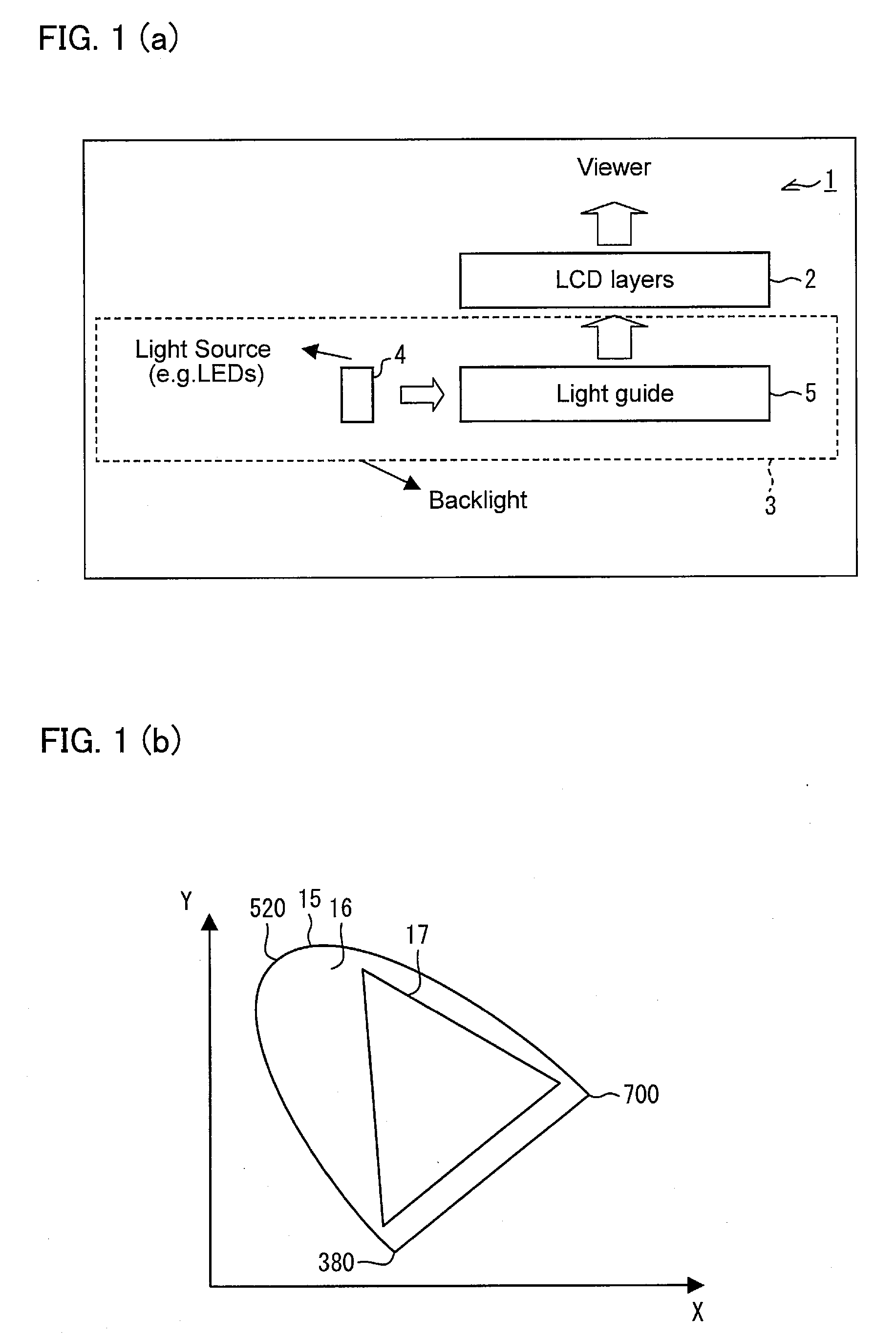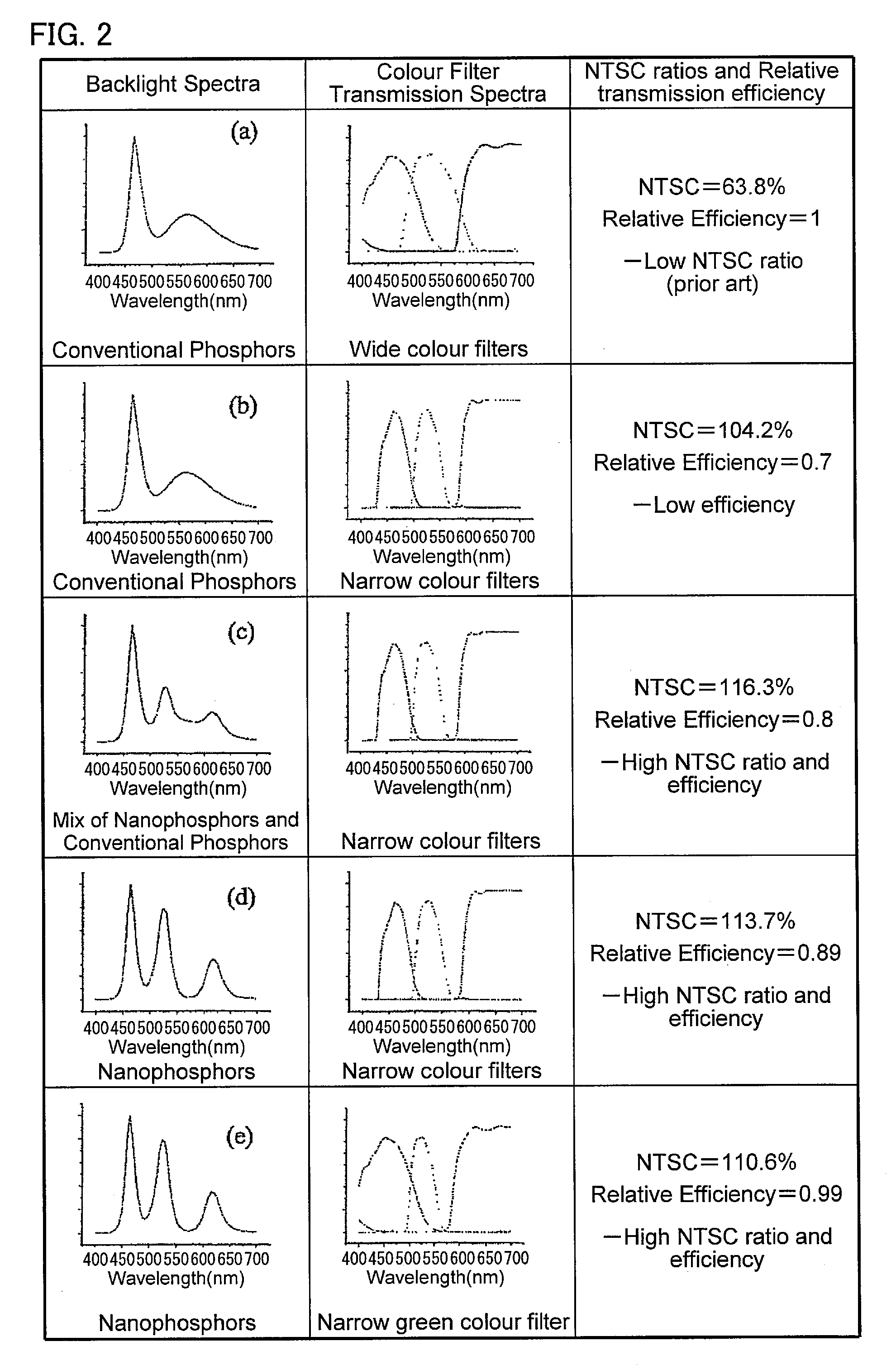Display
a technology of display and display panel, applied in the field of display panel, can solve the problems of colour shift during extended operation, high cost of method, and high cost of required electronics circuitry, and achieve the effects of high brightness, high brightness, and no significant loss of efficiency
- Summary
- Abstract
- Description
- Claims
- Application Information
AI Technical Summary
Benefits of technology
Problems solved by technology
Method used
Image
Examples
Embodiment Construction
[0084]FIG. 3 is a schematic sectional view of a display 11 according to an embodiment of the present invention. The display 11 comprises a light source (described in more detail below), and an image display panel 2 disposed in an optical path from the light source. The display panel 2 comprises an image display layer 10 such as, for example, a liquid crystal layer. Components such as substrates for supporting the image display layer, electrodes and drive circuitry for driving the image display layer, and alignment films for, in the case of a liquid crystal image display layer, aligning the liquid crystal layer have been omitted from FIG. 3 for clarity. In this embodiment the display layer 10 is a pixellated image display layer, in which individual regions (“pixels”) of the image display layer may be driven independently of other regions.
[0085]The display 11 is intended to provide a colour display, and the display panel 2 is therefore provided with colour filters 9. In the case of a ...
PUM
 Login to View More
Login to View More Abstract
Description
Claims
Application Information
 Login to View More
Login to View More - R&D
- Intellectual Property
- Life Sciences
- Materials
- Tech Scout
- Unparalleled Data Quality
- Higher Quality Content
- 60% Fewer Hallucinations
Browse by: Latest US Patents, China's latest patents, Technical Efficacy Thesaurus, Application Domain, Technology Topic, Popular Technical Reports.
© 2025 PatSnap. All rights reserved.Legal|Privacy policy|Modern Slavery Act Transparency Statement|Sitemap|About US| Contact US: help@patsnap.com



